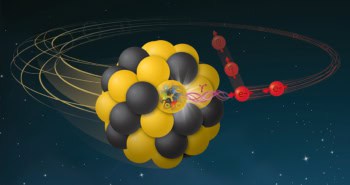The Millennium Dome in London – a £758m high-tech visitor attraction that was built largely with government money – is a national laughing stock in the UK. But at least the Dome opened on time. If only the same could be said for DIAMOND, a third-generation synchrotron radiation source that will be used by scientists from the UK and France. Seven years after the case for a new medium-energy synchrotron source was first made, the inability of the government’s Office of Science and Technology to decide where to build DIAMOND – which will cost about £550m to build and operate over a 20 year period – has moved from comedy to farce.
Like the Dome, DIAMOND will be a large circular structure. Electrons will hurtle around a storage ring with a circumference of 338 metres, releasing X-rays as they wiggle and undulate through the magnetic fields created by various insertion devices. These X-rays will be used for a wide range of experiments in biology, chemistry, physics and other sciences.
The UK science community first identified the need for a new synchrotron in a report presented by Michael Wolfson, professor of physics at York University, to the science board of the then Science and Engineering Research Council in April 1993. French scientists had started work on a similar project called SOLEIL the previous year. Paragraph 5.2 of Wolfson’s report reads: “We have accorded MES [a medium-energy synchrotron source] highest priority. The plan calls for detailed design to start early 1994, with a view to starting construction early in 1997. An urgent prerequisite will be to choose the site. Construction and commissioning would be completed by the end of 2001 when operation would begin.”
As of mid-February 2000, a decision has still not been taken on the site – even though the Wellcome Trust, a biomedical charity, has promised around £100m towards the cost of the facility, and the French have abandoned SOLEIL and joined the UK project. However, the government can still not decide if it wants to build the source at the Rutherford Appleton Laboratory near Oxford in the south of England, or at the Daresbury Laboratory near Manchester in the north.
A brief history reads as follows. In January last year the Wellcome Trust suggested to the Office of Science and Technology (OST) that an open competition should be held to select the site. The OST agreed but wanted to delay the selection process. At the end of April, however, the OST wrote to the Trust saying that it preferred the Rutherford lab. The Trust went along with this idea. On 4 October, however, Stephen Byers, the cabinet minister responsible for science, wrote to Wellcome stating that he was “minded to site the synchrotron at Daresbury”. This did not go down well with the Trust and the argument has raged on ever since.
In the meantime, the CLRC, the body that runs both Rutherford and Daresbury, has remained silent in public about the issue, while unions and staff at Daresbury – site of the UK’s existing second-generation synchrotron source – have waged a vigorous media campaign with the backing of local politicians, eminent scientists and Daresbury users.
There is little doubt that the discussions about where to site DIAMOND have been a shambles. Not since the government procrastinated at length over whether to site a national Astronomy Technology Centre in Edinburgh or Cambridge has a decision-making process so needlessly damaged scientific morale in the UK.
Indeed, the indecision has dragged on so long that a further delay of, say, six months would make little difference. Everyone agrees that DIAMOND is a 20 year investment. The UK and France will not miss out on any monumental discoveries if they delay DIAMOND by a further six months. The only option is to appoint a panel of independent experts to examine the pros and cons of the two sites and make a decision based on merit alone.



